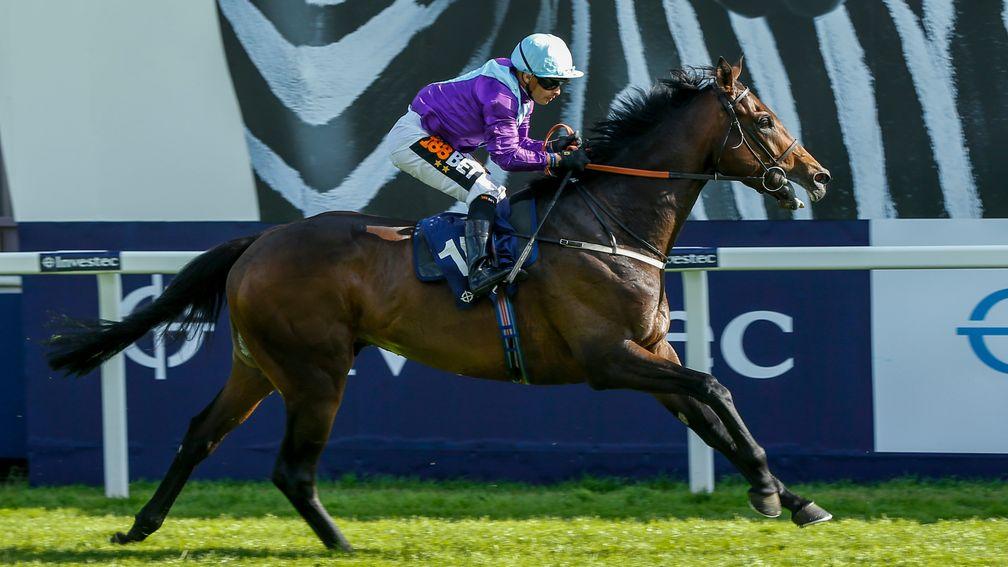Punting pointers: how to find winners at the Derby meeting

A different test at different distances
Most racecourses are either stiff and place the emphasis on stamina – think Ascot and Sandown – or sharp and favour those with speed – think Kempton and Musselburgh. At Epsom, however, the nature of the test, and therefore the type of horse you want on side, depends on the distance of the race.
At trips up to 1m½f Epsom is essentially a sharp track, with the majority of the action taking place downhill. This offers those with question marks over stamina a realistic chance of lasting home. It is a different story for races contested at 1m4f, however, as the runners face a steep uphill climb upon leaving the stalls and proven stamina is an asset which should not be underestimated.
Similarly quirky tracks a starting point in handicaps
With steep undulations and a pronounced camber up the home straight, Epsom's quirky course provides an unusual challenge that many horses do not relish. Some paddock gurus believe a horse's size and shape says plenty about whether they will act on the course, but there are also clues to be gathered from the form book.
Brighton, which also has a sweeping left-hand bend taken on the downhill run, is the most similar track in terms of course configuration and horses with good form at that venue are likely to prove effective at Epsom.
You might find a few handicappers with Brighton form, but that course rarely provides many pointers for races at a higher level. The track to focus on for Classic clues has been Chester, which isn't undulating but still poses an unusual test – so form at that venue puts a tick in the 'adaptability' box – while horses with a good cruising speed are rewarded, as they tend to be at Epsom.
Skill in the saddle should not be overlooked
The unusual track lends itself to specialists emerging, and not just in equine form. Some riders have mastered the intricacies of the course and can provide their mounts with a significant advantage. For many years Kieren Fallon was the absolute master, and he finished his career with a healthy level-stakes profit at the track – as well as three Derby triumphs and four Oaks victories.

Silvestre de Sousa hasn't enjoyed Classic success but has an extraordinary level-stakes profit – nearly £50 to a £1 stake in the last five years – and was in flying form at last year's Derby festival, booting home three winners, including the final two of the meeting to send punters home happy.
De Sousa is especially effective from the front, which perhaps explains his prowess at Epsom, where such tactics can often be advantageous due to the frequency of trouble in running – as a result of horses failing to handle the camber – hampering those in behind.
Draw can be significant
Stall one, the inside draw, is perceived to be a disadvantage over 1m4f at Epsom.
Since stalls were introduced for the Derby in 1967, three horses (Blakeney, Roberto and Oath) have won from the inside draw, which is deemed to be a negative due to the runners having to tackle an early right-hand bend. This can lead to getting shuffled back or having to use up energy, on an uphill section of the course, to secure a good position. Last year's beaten favourite Saxon Warrior was drawn in one.
Conversely, stall one or other inside draws are an advantage over six furlongs as the runners quickly charge down towards Tattenham Corner, where you do not want to be caught wide.
Get ahead of the game with Get Your Eye In - exclusive Saturday preview content on racingpost.com and the Racing Post mobile app from 2pm on Friday
- 2.50 Saint-Cloud: Village Voice and Cristian Demuro reunited in search of Prix Corrida success for Jessica Harrington
- 4.35 Cologne: 'We've had this in mind since November' - will the plan pay off for Devil's Point in the German 2,000 Guineas?
- 6.10 Windsor: will form of runaway Dante winner Economics prove key? - analysis and key quotes for fillies' maiden
- Cracking the Premier puzzle with Richard Birch's selections for all nine ITV4 races on Sunday
- Bryony Frost and Charly Prichard set for major Grade 1 tests on Grand Steeple-Chase card
- 2.50 Saint-Cloud: Village Voice and Cristian Demuro reunited in search of Prix Corrida success for Jessica Harrington
- 4.35 Cologne: 'We've had this in mind since November' - will the plan pay off for Devil's Point in the German 2,000 Guineas?
- 6.10 Windsor: will form of runaway Dante winner Economics prove key? - analysis and key quotes for fillies' maiden
- Cracking the Premier puzzle with Richard Birch's selections for all nine ITV4 races on Sunday
- Bryony Frost and Charly Prichard set for major Grade 1 tests on Grand Steeple-Chase card